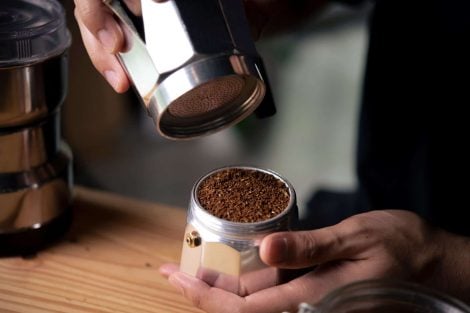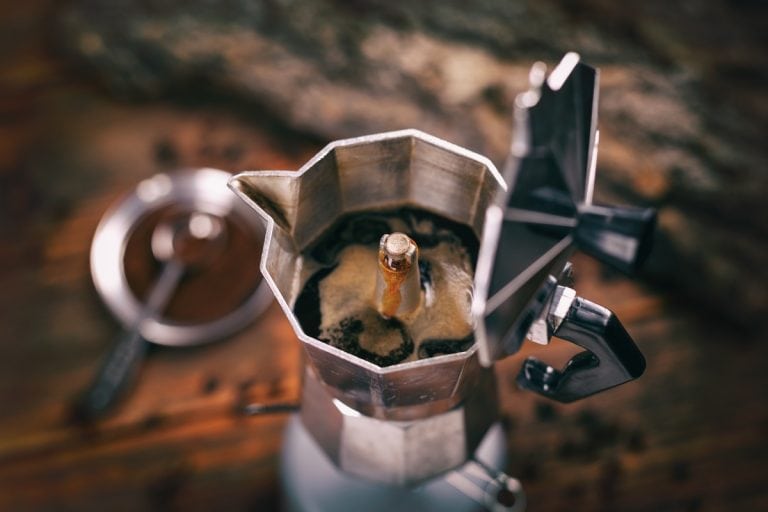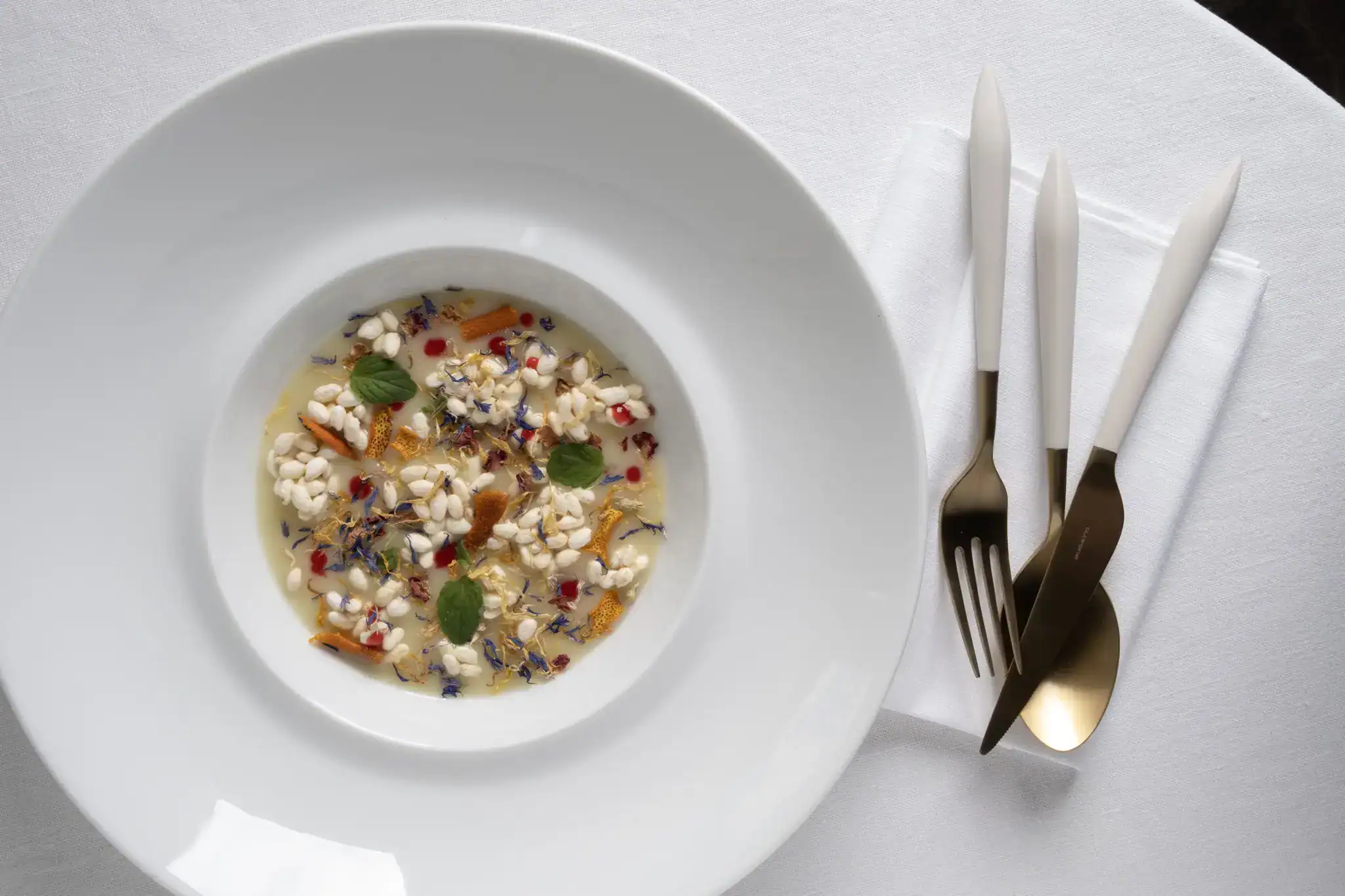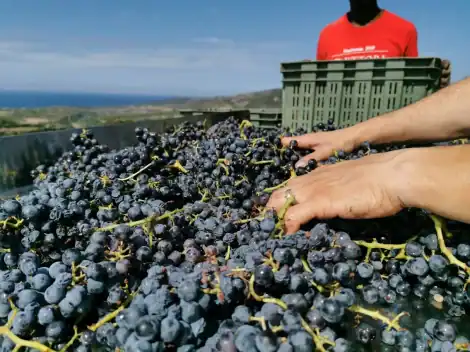The ritual of the moka pot
A little water, ground coffee, the manual gesture repeated over time, day after day, a game of the wrist in which the Italians are absolute champions. Then the flame is lit. The trepidatious wait, often accompanied by slow movements, still numb from sleep, and then finally the awakening: the gurgling that unites all the homes of the Italian peninsula in the morning, that muttering sound that evokes family memories, domestic environments, care and the many well-deserved breaks from work or study. Of course, explaining to an Italian how to make a moka pot seems an unlikely undertaking: everyone has his or her own recipe, jealously guarded and handed down from generation to generation. And his or her trusted coffee brand, the blend that comes closest to his or her taste, the tricks and secrets for obtaining the perfect beverage. Imprecise by nature, the moka is an instrument that is difficult to teach, yet there are a few rules - if one can speak of rules. And, just as in the case of espresso, they’re not always obvious.

An 85-year love story
Coffee mound, yes or no? Level or pressed powder? Water level under or above the valve? Medium or low flame? And then the gaskets: how often should they be changed? And what about the coffee pot? There are those who say, even today, that the best is the one that is a little dirty with old coffee, full of flavour and aromas that are now gone. Is it necessary to shed light on the home preparation of coffee? Yes, because tradition, ancient and fascinating, to be carefully preserved and respected, is not always enough to obtain quality brews. An emblem of the lifestyle of any self-respecting Italian family, the moka pot was patented 85 years ago by the famous little man with a moustache, Alfonso Bialetti, who in 1933 drew inspiration from his son Renato's moustache to create what would shortly become one of the most representative symbols of Italian-made products. Since then, there have been many stovetop coffee pots developed by the company and other manufacturers, now available in many variations: induction, decorated, designer.
Coffee at home: are there rules?
The ritual, however, has changed very little. On the contrary, it has remained anchored to ideas and beliefs no longer applicable to the contemporary world. That's why we decided to call on experts in the field to explain to us how to make an excellent moka at home. Which remains a home-made and imprecise method, artisanal in the strictest sense of the term, but which can still be prepared with greater care. To understand the whole process, we asked Lucio Del Piccolo, a coffee maker collector who has been involved in promoting the correct use of the moka for years, through conferences, events and through his blog Caffettiere e Macchine da Caffè. For the following guide, we relied on his words.
The 7 steps for a state-of-the-art moka pot
- WATER: It is advisable to use filtered water or bottled mineral water, because the higher the concentration of dissolved salts in the water, the lower the quantity of good fats that will be extracted. On the temperature, there are two schools of thought: room temperature, as Lucio claims; or hot, as other professionals in the sector, including Alberto Polojac, Italian moka coffee champion and importer of raw coffee, claim. Either way, what counts is the 'purity' of the water, i.e. as little chlorine as possible.
- WATER LEVEL: As far as the quantity is concerned, it is good to keep to the level of the valve at the bottom. This level can sometimes be reduced, but never exceeded. The valve serves to vent steam: if you cover it with water, it will be clogged and will only allow water to escape.
- GRIND: We will never tire of repeating: regardless of the extraction method chosen, whether it is a “simple” moka, a Napoletana pot, or a filter coffee, the beans must be ground at the moment. About 15 minutes after grinding, in fact, the product has already lost about 65% of its aroma.
- COFFEE: The most classic and popular blend in Italy, which varies according to area, is the 30/70, with 30% robusta and 70% Arabica. But a good cup can also be prepared (and it is advisable to try) with a single origin or 100% Arabica blend.
- COFFEE QUANTITY: Here’s the age-old question: heaped mound or not? The unequivocal answer is: no mound! First of all, because when you screw together the coffee pot, the powder settles on the edges and ends up on the gasket: without a good seal between the two parts, the coffee is extracted badly. And then, because of the brew ratio, i.e. the ratio of water to coffee, which is usually - for a three-pot moka - 1 to 10. So, about 15 grams per 150 millilitres of water. If you increase the amount of powder, some of the soluble compounds - the more bitter and unpleasant ones that we would otherwise lose - go into the cup.
- GURGLE: A little patience and it finally starts to mumble, alerting us that the extraction is complete. However, the moment the gurgling begins, our coffee is already spoiled, and that intriguing set of aromas that begins to spread around the house is nothing more than an amalgam of scents that we will lose in our cup. Ideally, therefore, we should interrupt the extraction a little before the bubbling, when the beverage reaches about three quarters of the pot, so as to retain most of the aromas.
- FLAME: A medium flame is ideal for preparing the moka. Once the flame is extinguished before bubbling, remove the coffee pot from the hob to completely stop the extraction.
The 'wet bed' technique
To obtain the most precise beverage possible, Lucio then invented a special technique: the “wet bed”, designed to counteract the excessively high temperature that the beverage reaches at the moment of bubbling, “around 100 degrees, while the ideal temperature is around 92/93°C”. The procedure is simple: just remove some water from the boiler and, once the coffee has been placed in the filter, pour it over the powder, "so that the temperature drops by at least 6/7°C". And then proceed normally with the extraction.
Maintenance
Like any tool, the coffee maker should be treated with care, washed and kept in excellent condition. Starting with a constant check of the gasket, "which must be soft and elastic", preferably silicone, "more durable than rubber, and also easier to screw on", and which must be replaced when it starts to dry out, "after about 4 years for the silicone one, 2 for the rubber". And the actual pot, on the other hand? "The steel one is never changed. In aluminium, rarely. The important thing is to treat the pot well, to clean it after each extraction". Despite the fact that over the years the theory of the 'worn in' moka coffee pot has increasingly taken root (and by worn, in this case, we mean kept dirty), the truth about maintenance is quite different: it is a good rule, in fact, "to wash the pot with water (and never with soap!) and then rub it with kitchen paper when it is still damp. Especially the filter and the upper chamber, which are the elements in which most of the coffee's fatty substances are deposited, “those that once dry, will go rancid, ruining our moka”.
Professional Moka
For those who want to try more specific techniques, finally, the advice of Alberto Polojac, who for the first edition of the Professional Moka Challenge competition, used a single-origin Ethiopian Sidamo, "but you can really prepare it with any type of coffee, as long as it is good. There are no more or less suitable products, only quality beans that are extracted well". For his extraction, he used 10 per cent water - 30 grams per 300 millilitres - and a bypass of 20 grams of the same water used for extraction. But what is meant by this? "Water is inserted into the container pot, because the drink prepared in this way - i.e. by blocking the extraction before bubbling - is thicker, and therefore needs an additional liquid component".
Napoletana, the home-made drip
There’s more beyond the moka pot, however: there are many Italians who choose to resort to the napoletana, another domestic tool that works in a completely different way. It is a coffee pot consisting of a water tank, a coffee container, a filter, a beverage tank and a lid: when the water comes to the boil, steam escapes from the hole in the water tank and the coffee pot is turned upside down. In this way, the water passes through the coffee and is collected in the drip tray. In exactly the same way as the drip, filter coffee, a method in which the coffee is extracted by passing hot water through the powder. "The napoletana is the perfect home-made drip," explains Alberto, "again, it requires hot water and a classic filter coffee proportion of about 60 grams of coffee per litre." And it doesn't end there: "The steam escaping from the little hole warns us that we have reached a temperature of 100 degrees," adds Lucio,"at that moment, all we have to do is wait a couple of minutes for the temperature to drop and then turn the coffee pot upside down, so that the water can go down and slowly pass through the ground coffee."
by Michela Becchi


 "Trump's tariffs? It's no longer time to be diplomatic. Europe must respond firmly." Matteo Lunelli speaks
"Trump's tariffs? It's no longer time to be diplomatic. Europe must respond firmly." Matteo Lunelli speaks The Michelin star king of Liguria opens a new restaurant: here is Luv by Mauro Ricciardi
The Michelin star king of Liguria opens a new restaurant: here is Luv by Mauro Ricciardi Alta Langa, splendour and mood swings: here’s what our tastings reveal
Alta Langa, splendour and mood swings: here’s what our tastings reveal





